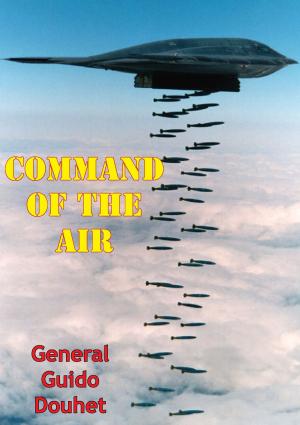Teutoburg Forest, Little Bighorn, And Maiwand: Why Superior Military Forces Sometimes Fail
Nonfiction, History, Middle East, Persian Gulf War, Military| Author: | Major Michael T. Grissom | ISBN: | 9781782896203 |
| Publisher: | Tannenberg Publishing | Publication: | August 15, 2014 |
| Imprint: | Tannenberg Publishing | Language: | English |
| Author: | Major Michael T. Grissom |
| ISBN: | 9781782896203 |
| Publisher: | Tannenberg Publishing |
| Publication: | August 15, 2014 |
| Imprint: | Tannenberg Publishing |
| Language: | English |
Usually in history it seems that the technologically advanced society has a greater advantage in warfare than more primitive societies. For most battles this seems to hold true; however, there are exceptions to this rule. This document examines three different battles in history where a primitive, tribal force was able to decisively defeat a better-equipped, more advanced army. Following the introduction the second chapter focuses on the Romans versus Germanic tribes at the Battle of Teutoburg Forest; the third chapter investigates Custer and the Battle of the Little Bighorn; and the fourth chapter discusses the Battle of Maiwand in the Second Afghan War. Although each of these battles has its own unique circumstances that contributed to the victory of the primitive forces, three main themes link each of the battles. In each battle the technologically advanced army followed predictable tactics. The primitive armies employed new tactics that generally served to negate some of the technological advantages of the superior force. And finally, cultural influences played a role in strengthening the resolve to fight despite apparently poor odds. In each of the battles these factors combined with others to produce a victory over a technologically advanced foe.
Usually in history it seems that the technologically advanced society has a greater advantage in warfare than more primitive societies. For most battles this seems to hold true; however, there are exceptions to this rule. This document examines three different battles in history where a primitive, tribal force was able to decisively defeat a better-equipped, more advanced army. Following the introduction the second chapter focuses on the Romans versus Germanic tribes at the Battle of Teutoburg Forest; the third chapter investigates Custer and the Battle of the Little Bighorn; and the fourth chapter discusses the Battle of Maiwand in the Second Afghan War. Although each of these battles has its own unique circumstances that contributed to the victory of the primitive forces, three main themes link each of the battles. In each battle the technologically advanced army followed predictable tactics. The primitive armies employed new tactics that generally served to negate some of the technological advantages of the superior force. And finally, cultural influences played a role in strengthening the resolve to fight despite apparently poor odds. In each of the battles these factors combined with others to produce a victory over a technologically advanced foe.

![Cover of the book Russian-Soviet Unconventional Wars in the Caucasus, Central Asia, and Afghanistan [Illustrated Edition] by Major Michael T. Grissom](https://www.kuoky.com/images/2015/november/300x300/9781782899655-UNi2_300x.jpg)

![Cover of the book ARCHIE, FLAK, AAA, And SAM: A Short Operational History Of Ground-Based Air Defense [Illustrated Edition] by Major Michael T. Grissom](https://www.kuoky.com/images/2015/november/300x300/9781786253712-TMbs_300x.jpg)



![Cover of the book Conquering The Night — Army Air Forces Night Fighters At War [Illustrated Edition] by Major Michael T. Grissom](https://www.kuoky.com/images/2015/november/300x300/9781786252371-lfdB_300x.jpg)


![Cover of the book Wanat : Combat Action In Afghanistan, 2008 [Illustrated Edition] by Major Michael T. Grissom](https://www.kuoky.com/images/2014/august/300x300/9781782894940-TjlN_300x.jpg)

![Cover of the book Arise To Conquer [Illustrated Edition] by Major Michael T. Grissom](https://www.kuoky.com/images/2015/november/300x300/9781786257581-cPT5_300x.jpg)

![Cover of the book Helicopters in Irregular Warfare: Algeria, Vietnam, and Afghanistan [Illustrated Edition] by Major Michael T. Grissom](https://www.kuoky.com/images/2014/august/300x300/9781782895152-A0GJ_300x.jpg)
